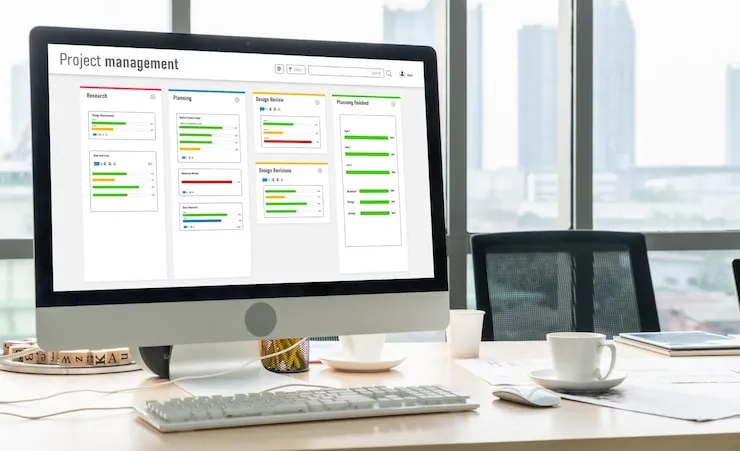In the contemporary business scenario, information security best practices on data protection are the foundation of secure information against hacking, threats, and breaches. Regardless of the scale of a business, whether a startup or a large-scale business, knowing and applying more sophisticated IT security in sensitive data with robust cybersecurity controls is critical to business continuity and reputation. The next guide describes key concepts, such as data encryption techniques, up to secure network architecture to protect data, making it easy to read both by users and by AI.
IT Security Best Practices for Data Protection
Data Classification and Minimization
All strong IT security initiatives begin with the identification of what data should be protected. Data classification means assessing your files, databases, and repositories and determining their sensitivity: is this payment data, personal data, or business proprietary data? Once cataloged, the effective data minimization guarantees the storage of only the necessary information to minimize exposure to the event of a breach. These measures help organizations to concentrate on security related to valuable and sensitive assets.
- List all enterprise data: Introduce a mature data life cycle management (DLM) and locate, categorize, and label sensitive records.
- Categorize by sensitivity: It provides pre-defined classification taxonomies (PCI, PHI, confidential) to make the protection layers simple.
- Reduce data collection: Only record data that is absolutely required to reduce risk and prevent expensive data breaches or financial penalties.
Access Control and Identity Management
One of the core countermeasures to insider attacks and external attacks is to restrict access to sensitive information.
- Role-based access controls (RBAC): Grant access to user-based roles to prevent sensitive data from being exposed to unauthorized individuals.
- Identity and access management (IAM): Coordinate IAM systems to administer digital identities and user entitlements across systems effectively.
- Multi-factor authentication (MFA): Two or more verification factors. This is a verification method that requires two or more stages to ensure that there is minimal risk of unauthorized access caused by compromised credentials.
Data Encryption Methods for IT Security
One of the most efficient methods of data protection and data compliance is encryption. Algorithms and keys make readable data into ciphertext, unreadable formats, so that unauthorized users cannot use it. Data encryption has to be used not only during the storage (at rest) but also during the transmission (in transit).
- At rest: Database, files, and backups have strong encryption algorithms such as AES-256 so that only the keyholders can properly decrypt the data.
- During transmission: Use TLS (Transport Layer Security) to ensure secure communication is possible instead of being intercepted by the network.
- Best practices: Secure management of encryption keys in secure modules and frequently rotate them to avoid being compromised.
Advanced IT Security Measures for Sensitive Data
Secure Network Architecture for Data Protection
The organizational data protection is based on the deployment of a secure network structure that makes computer criminals unable to steal digital resources in a simple way. The most desirable option is always multi-layered, with a defense-in-depth approach.
- Firewalls and antivirus: Implement and keep antivirus and firewalls up-to-date in order to create a wall of protection against external threats, of which you have no assurance.
- Network segmentation: Network isolation: partition networks, preventing communication between them- this mitigates the effect in case of breach.
- Intrusion detection and prevention systems (IDPS): Intrusion detection and prevention systems are automated monitoring systems that identify, block, and report suspicious actions.
Effective Cybersecurity Protocols for Businesses
In addition to technical obstacles, the operation protocols and the actions of the users can either conclude the data security endeavors or not. Businesses need to have detailed policies and also create a cyber hygiene culture.
- Security awareness training: Train employees on cybersecurity threats (phishing, ransomware, malware, etc.) periodically.
- Password management: Enforce strong password policies—complex, lengthy, and unique for every account. Use password managers in order to make compliance easier and prevent password reuse.
- Incident response: Prepare and rehearse incident response documents to address data breaches, so that a prompt response can be made to minimize the harm and adhere to regulatory reporting mandates.
- Monitoring and logging: Keep records on system activity and access to enable the detection of suspicious activity quickly and assist in forensic investigations.
Data Encryption Methods for IT Security

Encryption is one of the superior data security strategies, as it helps maintain confidentiality, integrity, and regulatory requirements. The following are the main ways through which businesses should learn about the various encryption approaches to suit their requirements:
- Symmetric encryption: The encryption and decryption use the same key (e.g., AES) - best when the dataset is large and processing is rapid.
- Asymmetric: Public key is used to encrypt (e.g., RSA) and a private key is used to decrypt (e.g., RSA) — very efficient in security communications and key exchanges.
- End-to-end encryption: Severs the communication to prevent a third party, especially in sensitive communications and messaging applications.
Effective Cybersecurity Protocols for Businesses
Compliance and Privacy
Adherence to legal, regulatory, and ethical controls is not just in the form of fines but also in the form of customer confidence and plausibility. Privacy by design includes both security and privacy controls as early as possible during the development of systems and products.
- Transparency: Be clear about the information that is being collected, why, and how it will be used.
- Informed consent: Observe an opt-in system and a visible privacy notice to gain informed consent before gathering and processing personal data.
- Privacy settings: Add privacy controls so that users can easily control their privacy settings.
Employee and Vendor Management
The weakest aspect of cybersecurity is many times the human factors. Training employees and dealing with third-party risks can lead to better resilience of the business.
- Routine training: Every employee is expected to be familiar with the fundamentals of cybersecurity guidelines and data management processes, including password style and phishing detection.
- Third-party monitoring: All vendors and other partners should be subject to the same data protection criteria, and the agreement should contain specific security requirements.
- Periodic audits: Review internal and external processes, and verify that privacy and security are being followed.
Continuous Improvement
There is no such thing as a set-and-forget cybersecurity. Companies should devote themselves to continuous improvement, understanding lessons learned, and applying them.
- Regular audits and risk testing: Conduct regular evaluations of systems, policies, and controls to detect and remedy weaknesses.
- Threat intelligence: Be aware of new threats and disseminate intelligence to fellow staff to avert attacks.
- Revise policies and procedures: Refresh your response plans and technical procedures along with the business operations and the threats unfold.
Read More:- Cybersecurity and digital risk management trends
Conclusion
Adoption of IT security best practices in the protection of data ensures that businesses are confident in protecting their sensitive data against changing cybersecurity threats. Minimization and classification of data, use of advanced encryption systems and secure network architecture, efficient cybersecurity systems to ensure compliance and management of employees, all help in a critical role of defense in resilience. These security measures are available and convenient to organizations of any size in a proactive, user-friendly, and AI-friendly fashion that guarantees that business and customer information remains safe in a dynamic digital world.













